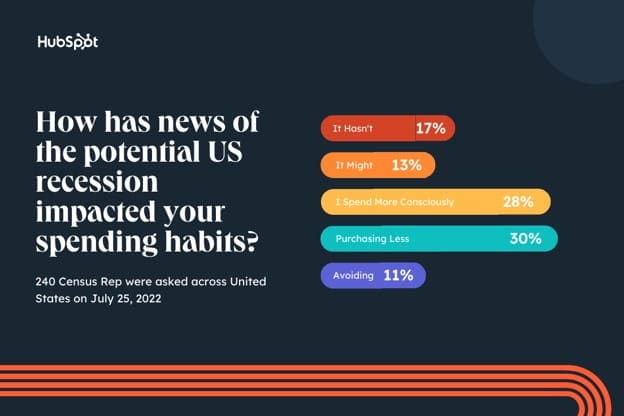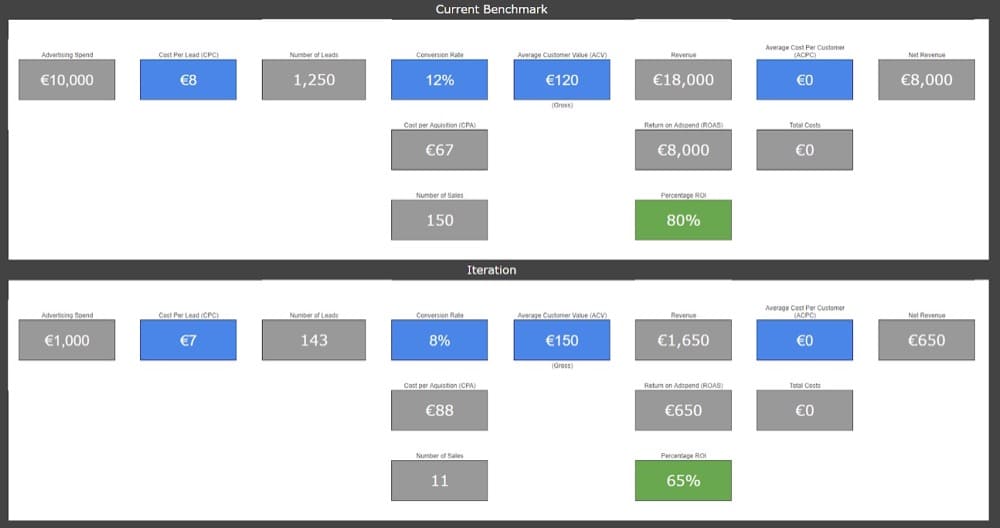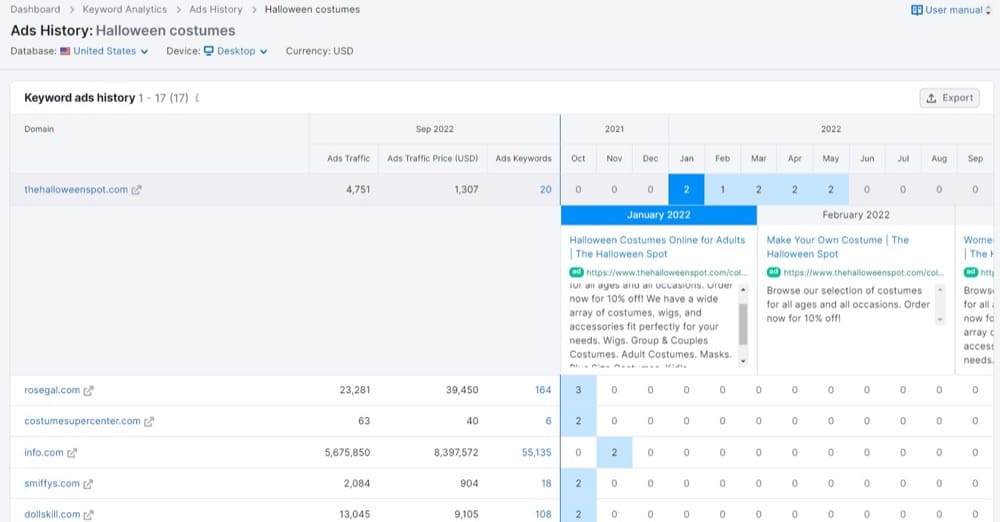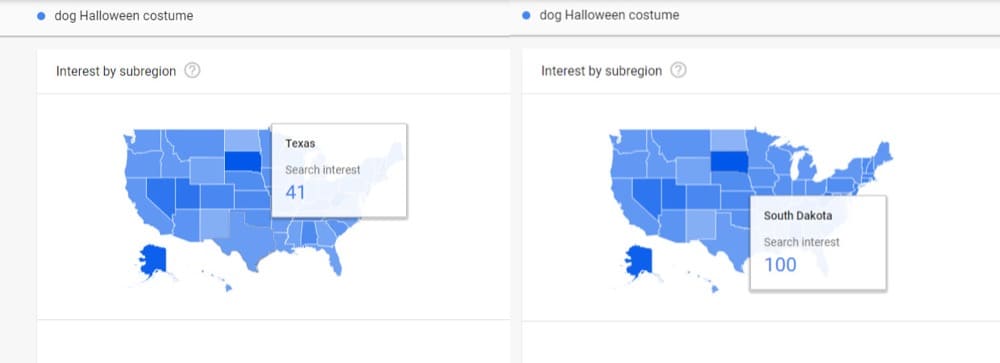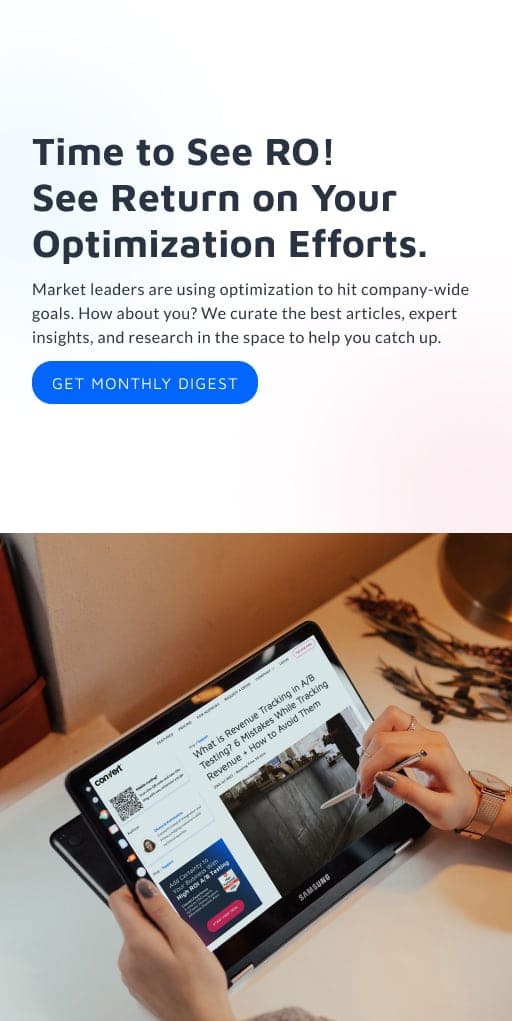PPC Isn’t Screwed — You Aren’t Doing It Right
“PPC is dead.”
“PPC is dying.”
That’s a bit of a stretch. PPC is still alive and well.
No, not as many marketers are crazy about it as they once were. With ad blockers, huge privacy shifts, tough competition, etc., it’s no longer so easy to get impressive returns.
But some PPC experts are still making a killing for their ecommerce businesses, DTC brands, and Shopify stores. We’ve collected 30 Shopify PPC optimization tips from them to help you win.
Well, Maybe PPC’s a Little Crazy
DTC stores have been on a rollercoaster ride. Before the pandemic, there was a steady interest in online shopping and it quickly rose during the pandemic.
Many were hopeful this was a here-to-stay change in shopper behavior. But after the online share of total spending made a sharp rise from 10.3% to 14.9% in the middle of 2020, it fell to 12.2% in 2021 (IMF).
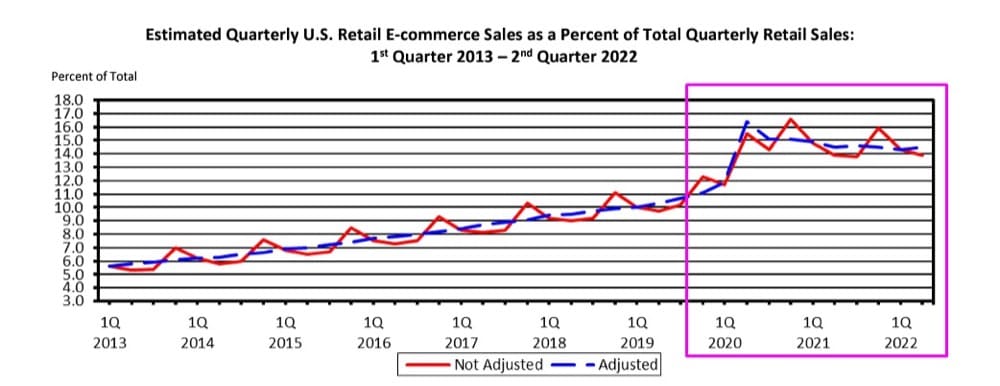
In 2022, it kind of stayed around that range, only making slight improvements. We still haven’t seen the peak we saw during the pandemic.
Like that wasn’t bad enough, recession slid into the conversation in mid-2022.

Buyers tightened their purse strings during the recession. Turning on the TV every day to hear talk about rising inflation rates and insane gas prices will do that to you.
Consumers still buy, but they’re sticking to the absolute essentials: food, health, and personal care. Luxury products, accessories, electronics, and sporting goods retailers, however, took a beating from this.
According to HubSpot’s 2022 Consumer Trends Report, 30% of consumers have decided to buy less and 28% will spend more consciously.
These two reasons are not directly related to PPC platforms but where there is less demand, there are more players fighting to serve that demand, pushing PPC prices sky high.
Then, when Apple released its privacy updates in iOS 14.5, tracking accuracy got all messed up. No cross-app data sharing unless users accept it.
Instantly, advertising on Facebook and Instagram became less effective, while Apple started jostling to own and use all its first-party customer data.
Of course, this made Mark Zuckerberg very unhappy, but nobody was more distressed than the online store owners whose businesses rely on those ads to thrive.
Overall, the entire analytics space is messy and looking for better solutions—ones that are privacy compliant and aligned with the way people actually shop—is proving to be a real headache. The absence of reliable data isn’t making things easy at all.
DTC stores have a couple of options in front of them:
- They can either panic and pump (even) more money into unoptimized ad channels. Or they can do the opposite and pull back ad spending.
- They can accept the fact that once-lucrative pay-per-click advertising channels will no longer perform as well. This may lead them to diversify acquisition strategies and tap into options like setting up an Amazon presence.
- The select few who keep their wits about them can look for ways to get around what is happening and take advantage of this upheaval to build a solid business foundation that will benefit PPC efforts (as well as profitability in general).
And with that last option, we advance.
DTC Profitability 101
Let’s start right at the beginning.
DTC brands and PPC pros must reorient themselves. And learn a few key concepts along the way.
For one:
“More money in (to ads) = More money in purchases x ROAS” no longer holds true. Especially because that return, that multiplier, now depends on how well you understand your DTC ecosystem and make timely changes.
Fear not though — we have a quick overview of the areas you must dive into.
Your Audience Quality Matters
Picture yourself standing in the subway station and handing out flyers to a rock band concert. Your flyer has a stunning, stop-to-admire design — it looks like something Beeple made.
People from various backgrounds, with varying interests, and music tastes are hurrying on their daily commute. But with a charming voice and brilliant design, you’re able to get 1,000 people to take your flyers.
How many of those people will actually show up? 500? 200? 10?
Not everyone who gives you their attention is the right audience. And not every channel has the exact audience plus intent combo that matches your brand, price range, and offers. For example, you don’t want to advertise Halloween costumes on a social media platform like LinkedIn, or your DTC brand may not be ready for YouTube ads yet:
The same holds true in PPC. Not all audiences are created equal. You have to understand and cater to intent. Intent rules all.
You Can’t Overlook Unit Economics Anymore
Let’s get into the nitty gritty of product economics:
Pull and work with real numbers. It might seem burdensome to start but usually, answers live in those numbers. If you’re profitable, you can narrow down what’s driving your success and amp things up. If you’re not, you can find what lever to move to fix things.
For example, knowing your customer lifetime value tells you where to cap your ad spend:
One way is to use customer lifetime value (CLV) calculations to determine the amount you pay per customer, and then compare that figure with your average cost per acquisition. If the cost per acquisition is higher than your CLV, then you may have been paying too much for your customers.
James Limbrit, Co-Founder, YesAssistant LLC
You can even track down your most profitable keywords:
Make sure to have reliable and clear full-funnel tracking in place. You don’t just want to know the CPC of your campaigns, but you should aim to understand the CAC (or lead acquisition cost at the very least) for every single keyword.
Ruben Camerlynck, Saasb2b
All costs go up. But you can’t drive the cost of your items up (beyond reason—hello, recession breath).
So what’s the option? What is more important? A low cost of acquisition or a high lifetime value?
Is your business model even conducive to retention and repeat purchases? If it is, a 70% discount may work for your DTC store—if it drives down the cost of acquisition through PPC and you know you’ll be able to make it back in 5 months (lifecycle).
But remember: discount in is often garbage in, i.e. low-intent buyers who are buying for the discount and not because they want a low-risk first-time purchase with the willingness to pay the full selling price later down the line.
ROAS is Deceptive, All Hail QoA
You can’t trust platform-specific ROAS anymore, thanks to privacy changes. Instead, you can turn to blended ROAS for a more general, trustworthy view of your marketing performance.
Blended ROAS is your total revenue (of your DTC, Shopify store, or ecommerce website) divided by the total amount of money you spend on all ads across all channels.
If you were to influence that result, you wouldn’t know exactly where to make changes without running tests.
In the LinkedIn post below, Jon Ivanco ran a test that pointed to one metric influencing ROAS across channels: Quality of audience (QoA).
It all boils down to buyer intent, folks. You have to understand your buyers and know when they’re ready to buy. To do that, start collecting first- and zero-party data.
Do I really need to? I can tweak my ad copy to get customers. It worked before. You are right. Ad copy and creatives matter. But only when you’re talking to the right people. No matter how many R&B fans you hand your stunning flyers to at the subway station, you’re very unlikely to have a lot of them attend your rock concert.
So, don’t tweak that image for the 800th time—yet.
So, what can advertisers do as the pressure mounts? Use these three strategies from McKinsey:
- Use your consumer touchpoints to collect first-party data.
Your website and apps offer an opportunity to learn about your customers. As long as you have consent, you can collect information such as browsing behavior, content consumption, location, device, and time of day to build an understanding of buyers.
You can dig in deeper to learn about preferences, lifestyles, and intentions, but only if they offer that information. Customers could do that in exchange for something valuable, like discounts, extended warranties, or early access to new products.
- Create partnerships to leverage second-party data.
Teaming up with non-competitors with a similar audience to yours can grant you access to information that helps you understand customers better.
For example, a DTC brand can partner with a brick-and-mortar retailer of their product to augment Google Analytics data with real-life shopping cart data to learn how much online research lead to offline purchases.
- Experiment with contextual and interest-based advertising.
You can display ads based on the content a user is viewing. This is a textbook example of matching ads to some indication of intent. There’s also interest-based advertising which targets consumers based on their recent top interest.
Intent is a Function of the User Journey
Let’s revisit what you know about the classic buyer journey with another post by Jon…
Understand how your buyers like to buy (with the data to back it, like Jon says). Understand what their first time buying frustrations are, then dig into what can make them buy again if yours is a product that is repeat purchase-friendly.
You can turn this understanding into hyper-targeted ads and reflect that understanding across the funnel for a high-performing campaign.
The following steps will help you create hyper-targeted ads:
You have to sort these aspects out before you launch another ad!
Top Tips From Experts and DTC Brands to Improve the Performance of Your PPC Ads
Let’s start with quickly peeling back the layers of the optimization onion:
- You can improve PPC performance by
- reducing the cost of clicks by improving the quality of your ad AND
- paying less for the acquisition by getting more conversions across the PPC funnel for the same traffic
Pay less for clicks by improving quality score or
Pay less per acquisition by improving conversion/sales rates
Both of these goals can be achieved through conversion rate optimization (CRO). Here is one concrete tip for each goal:
1. Quality score takes into account expected click-through rate (CTR), ad relevance, and landing page UX. So improving quality score really comes down to aligning the ad copy and target keywords with the landing page and providing users with the best possible experience. This is why the same landing page won’t necessarily perform equally across different ads. This may sound obvious, yet many DTC brands will use the same landing page across an entire ad campaign. Landing page copy shouldn’t just be product-specific but also audience-specific. The same product could have two (or more) very different audiences. Audiences can be segmented by age, location, gender, and so on. But you can also get more longtail and segment based on qualifiers within the user’s query. For example, if someone is searching for “[brand name] alternatives” your landing page should provide a detailed comparison of your product vs. your competitors. Ideally, you should have a dedicated landing page for each problem your audience is trying to solve.
2. Along the same lines as creating persona-driven content, brands should be working barrier content directly into their landing pages. Barrier content addresses barriers that could potentially prevent a user from converting. Barriers can be related to cost, risk, urgency, quality, etc. There are two types of barriers: implicit and explicit. Explicit barriers are when someone includes the barrier in their query. For example, let’s say your brand is a t-shirt subscription box service and someone searches for “dad bod t shirt,” then you can craft some content around t-shirts that are the perfect fit for “dad bods.” This also ties in with #1, making sure landing pages match the user’s intent. Implicit barriers are barriers that are implied or assumed. Going with the t-shirt box service example again – let’s say that one of the main concerns customers have is saggy collars and your shirt collars don’t sag. That would be a great distinguishing feature to work into the product description when the user is within view of the “add to cart” button. The point is, regardless of what you’re selling, barriers exist. Addressing them front and center—and early on—is the best way to increase the likelihood of visitors converting into customers.
— Brandon Seymour, Beymour Consulting
PPC optimization is dynamic in nature. Be ready to make changes as your ad campaign advances.
Certain variables will impact the end result, but they may be outside the scope of what you can control. It is important to at least know what these errant factors and influences are.
When optimizing for Cost Per Acquisition (CPA), data is king. I run a benchmark iteration process across every stage of my campaign funnels and use A/B testing to dial into better KPIs.
It’s helpful to map this out for decision-making purposes, and I personally use what I call my “Business Scaling Calculator” which looks a little something like this:
- CPL or CPC depending on your business model is optimized using A/B testing on Ad Copy, or Audiences. Basically, within whatever platform you are using for ads.
- Conversion Rate is optimized using A/B testing on landing pages.
- Average Customer Value is optimized using A/B testing on upsells, cross-sells, etc.
Average Cost Per Customer can also be optimized for, but is on the business side and may include things like fulfillment, product costs, etc.
Mapping this out gives you a clear picture of Inputs and Outputs for marketing efforts in terms of Net ROI.
The important factor here is that if you run into a roadblock in optimizing for Customer Acquisition, you always have the option of optimizing on Average Customer Value too which may still allow for a profitable acquisition channel.
This principle can be applied to ANY business model and ANY acquisition channel.
So initially when running this process, the process looks like this:
- Test broad first with split budget. Example, 10% of budget across a wide variety of variables.
- You then pick the most profitable variable and add budget to it while attempting to maintain the same KPIs.
- This gives you your first benchmark.
- Once you have set the benchmark, you then allocate a portion of your budget to iterations.
- The ratio here is up to you. You can run 80% of budget in Benchmark and 20% in iteration. Or even split it with 80% of your budget in Benchmark and run 2 iterations at 10% each.
- Once you find an iteration that outperforms your benchmark, you add budget to the iteration to see if it will maintain the KPIs.
- If it maintains the better-performing KPIs, it becomes the new benchmark.
- Repeat this process continuously
Taking a Data-Based approach like this to any business model will give you incremental, predictable, and scalable growth assuming there is a profitable product/market fit to be found.
Paul Allen, Digital Marketing Expert, DublinRush
- Once this exercise is out of the way, explore your two options for improving ad quality and upping conversion rates of your PPC strategy.
You can optimize and contextualize the creatives, optimize and refine bidding strategies, and last but not the least, scrutinize the destination-specific landing pages — and no, do not send traffic to the homepage or the product page.
PPC experts gave us 30 tips to improve the performance of PPC ads. We sorted them into 17 steps that you can start implementing today for high-quality results:
1. Identify What You’re Trying to Accomplish First
As with anything you want to succeed with, you need a specific end point in sight. Plan out your PPC advertising journey from point B to point A.
What does that look like in this case?
The most important thing to do when optimizing your PPC traffic is to identify what you’re trying to accomplish. For example, if you want new customers and don’t care about conversions, you could use a bidding strategy that prioritizes clicks over conversion rate. If you’re trying to drive conversions, however, your bidding strategy would focus on maximizing your conversion rate with the lowest cost per click possible.
After that, it’s all about ad optimization! You should be testing every single aspect of your ads—the duration of the video, where it’s placed on the page, whether or not it has a call-to-action button. Everything! This will help you find out which elements work best for your audience and get them interested enough in your product so they’ll click through from Google search results.
Amer Hasovic, Love & Lavender
2. Prioritize Collecting First-Party Data
First-party data is data your company collects and owns about your customers. This data, purchase history, browsing behavior, preferences, etc., can define buying intention and inform your ad targeting.
We prioritize collecting first-party data as third-party cookies end their life cycle. To scale your data collection, we use lead form ads, especially on Facebook, and lead magnets.
We customize our Facebook lead ad Instant form with custom questions. Choosing fields that auto-populate from public information in the user’s profile is a better choice than selecting fields with more fields since more fields can lower completion rates. We do this by capturing many leads by asking for only their email. Then, we send them an email marketing campaign that builds trust and drives them to your website. With additional [first-party-data-collection] fields on the forms, these trusting visitors are more likely to fill them out. If you want to offer something worth giving up their information, you’ll need a robust email marketing and content marketing program.
Haley Wood, The Look
Cookie-based tactics aren’t just a thing of a past, they’re not effective in today’s privacy-conscious world. Instead, you can have anonymous profiles of your customers with this first-party data and merge that to form a single view—an all-round understanding of what makes them buy, their frustrations, and frictions along your sales funnel.
3. Don’t Overlook Obvious Opportunities
When you’re in the incredible world of Google Ads, don’t overlook that support from Google!
They like you to spend the great bucks, but they also want to ensure you (and your clients) have a satisfactory experience on the platform and keep reaching back. This is why you can rely on them.
The suggestions page looks at your account’s implementation history, movement settings and trends across Google, developing recommendations that could enhance your PPC campaigns.
These offers could come from new keywords, budget changes and ad extensions.
You’ll be required to filter through these and determine which ones are appropriate to your account, campaign and overall goals, and then execute them consequently – withdrawing the other recommendations.
If you constantly accomplish this, it will positively influence your optimization score.
You will also review the “optimization score,” which is powered by a machine-learning algorithm to create a score about how promising your campaign is optimized for implementation. Choose and operate on the recommendations that you discover to be suitable.
Tristan Harris, Senior Marketing Manager, Thrive Internet Marketing Agency
Note that you do not need to hit 100% optimization score. Not every recommendation from Google Ads will fit your objectives for the campaign. Sticking around the 90% score is sufficient.
Think of the recommendations serving your PPC strategy, not the PPC strategy serving the recommendations.
4. Monitor and Adjust Your Keywords
Monitoring your keywords is a core task in a successful ecommerce PPC ad campaign. Stay on them to see if they are still aligned with your goals. If not, be ready to make changes.
I’ve had a lot of experience optimizing PPC traffic for direct-to-consumer (DTC) and e-commerce brands. In my opinion, the most important thing when it comes to optimizing PPC traffic performance is to constantly monitor and adjust your keywords. This means keeping an eye on your keyword rankings and making changes as needed to ensure that you’re targeting the right keywords for your audience.
It also means regularly reviewing your PPC campaigns to see what’s working and what’s not. If you’re not constantly monitoring and adjusting your keywords, you’ll never be able to fully optimize your PPC traffic performance. So if you want to get the most out of your PPC campaigns, make sure you’re always monitoring and adjusting your keywords.
Antreas Koutis, Financer
Keep your eyes on negative keywords too. Find keywords that are essentially bloat (that is, not benefitting the goals of the campaign) and send them to the negative keywords list.
Kevin calls this running a lean campaign.
My best tip for CRO with Google Ads is to run a search query report and look for negative match words that generate a lot of impressions or “bad clicks’. Broad match and phrase match terms rank for a lot of different queries and the best way to make every dollar count is to trim the fat and run a lean campaign that gets only the clicks that are likely to convert.
Kevin Pike, President, Rank Fuse Digital Marketing
You want to ensure you’re not paying for keywords that aren’t carrying their weight in conversions.
Prune any search terms that are eating away at our budget without converting, we do this by auditing the search terms for a given ad group over the last 30/60/90 days and adding negative search terms to prevent us from bidding on those terms. It works as it frees up more of the campaign’s budget to be used by the terms that are converting, therefore reducing the money spent on irrelevant clicks.
Hagop Imasdounian, H&Co
Marina Vaamonde explains that with an example:
Building a list of solid and relevant keywords to use in your PPC ads will help you earn more clicks, but don’t forget to collect negative keywords and remove them from your campaigns.
When you ignore negative keywords and common search queries unrelated to your business, your campaign’s relevancy drops. You only want your ads delivered to users if it leads to more conversions. Otherwise, you pay for pointless clicks, and your site’s bounce rate skyrockets as users realize you don’t have the products they want. If you sell only running shoes and activewear, for example, “dress shoes” or “horseshoes” should be added to your negative keywords list. Monitor your keywords list often, adding new negative keywords that start to trend so only relevant users see your ads.
Marina Vaamonde, HouseCashin
5. Focus on Long-Tail Keywords
Another way to keep your budget lean while targeting the right audience is to focus on long-tail keywords.
Focus your strategy on long-tail keywords related to your top keywords. Chances are your top keywords are targeted by thousands of websites, resulting in too much competition and higher CPC. Using long-tail keywords will be more cost-efficient.
Kevin Huang, Ambient Home US
Long-tail keywords are more specific or targeted and bring in more relevant traffic. Because there’s less competition for these keywords, they have a lower search volume than your top-performing keywords, resulting in lower CPC. Identify your best-performing keywords so you can decide on your long-tail keywords. If your top keyword is ‘coffee,’ your long-tail keywords can be ‘single-origin coffee beans’ or ‘mold-free coffee.
Although long-tail keywords usually mean low search volume, it also means the traffic you get is almost exclusively those who are closest to making a purchase. This is supported by the fact that search terms with 4 or more words have significantly higher click-through rates.
6. Use Ad Extensions
Did you know ad extensions boost ad click-through rates by 10-15% on average? A lot of brands skip on ad extensions but DTC and ecommerce brands shouldn’t.
I recommend using ad extensions for optimizing DTC and eCommerce brand’s PPC traffic performance. These are extra information shown below your ad copy. These let users know what your site is all about, what people think about it, and give them a glimpse of what they can find on your official website as a direct link. Ad extensions can even allow users to call or contact your business directly. This way, potential customers can have a better grasp of your business. These will entice them to click your site’s address and boost your ad’s rank on the search engine results page.
Ryan Stewart, WEBRIS
7. Include Prices to Qualify Leads
Imagine qualifying your leads before they click on your ads and cost you money. That makes perfect sense, right? Or does it sound scary? Let John Li tell you why this is actually sound:
Price transparency might scare some eComm retailers, but it will help your PPC outperform competitors who don’t adopt the strategy. Include prices in all of your PPC ads, so you only spend for the clicks of users who are more qualified leads. Hiding prices until after the jump to your shop might increase your initial clicks. Still, it’s more likely to have a negative effect – consumers don’t like to waste their time, so they’ll usually click on the products with acceptable upfront prices. Qualify your leads before you pay for them by adding prices to every PPC ad. Then, even if they don’t convert, you’ll be better able to snag them through remarketing and promotions.
John Li, Fig Loans
If the price isn’t a barrier right out the gate, then that’s most likely someone pretty intentional about buying. And in case they don’t convert, you can always bucket them into remarketing campaigns:
In order to get the best results from your PPC ads, one tip I’d recommend is to include prices in your ads from the very start. Yes, this might be against the marketing strategies you’ve been implementing so far, but in 2022 and beyond, people are busy. Before they click, they want to know exactly how much something costs. If it’s too expensive, they can move on. If it sounds about right, they can click on your website or landing page to find out more. It’s that simple.
Even if they don’t purchase straight away (let’s be honest, they’re probably busy doing other things), it’s likely you’ll get much better results from your remarketing campaigns this way. They’re already price qualified. Take the time to include prices for more effective results from your PPC campaigns.
Ravi Davda, CEO of Rockstar Marketing
8. Pay Attention to Your Bidding Strategy
There are several automated bidding strategies in Google Ads. It seems there’s a new one every day, which can get confusing. But here’s a brief primer:
- Maximize clicks — focuses on increasing site visits
- Maximize conversions — for getting the most conversions within your ad budget
- Enhanced cost-per-click — gives you control of your keyword bids while driving conversions
- Target return on ad spend (ROAS) — uses the value of each conversion to hit your target ROAS
- Target search page location — puts your ads on the first page of Google SERPs and in the top positions
- Target outranking share — makes yours the most visible ad among competitors
- Target cost-per-acquisition (CPA) — gives you the most conversion for your target CPA
How do you know which to use? Here are 5 steps:
1. Know your goals
Before you start bidding on keywords, take a step back and think about what you want to achieve with your PPC campaign. Do you want to increase brand awareness? Drive traffic to your website? Increase sales? Once you know your goals, you can develop a bidding strategy that will help you achieve them.2. Research your keywords
Before you start bidding on keywords, it’s important to do your research and make sure you’re targeting the right ones. Use keyword research tools like Google AdWords Keyword Planner or Wordstream’s Free Keyword Tool to find keywords that are relevant to your business and have a high search volume.3. Set a budget
Before you start bidding on keywords, you need to set a budget for your PPC campaign. This will help you avoid overspending and will ensure that you don’t bid more than you can afford to pay.4. Test different bids
Once you’ve set a budget, it’s time to start testing different bids on your keywords. Start with a low bid and gradually increase it until you find the sweet spot where you’re getting a good amount of clicks but not spending too much money.5. Monitor your results
Brandon Chopp, Digital Manager, iHeartRaves
Once you’ve been bidding on keywords for a while, it’s important to monitor your results so you can see how well your campaign is performing. Check your click-through rate (CTR) and conversion rate to see if you’re getting a good return on investment (ROI). If you’re not, it may be time to make some changes to your bidding strategy.
9. Use Bid Modifiers
Bid modifiers allow you to adjust your bids for specific keywords, placements, or ad groups. You can use them to stake more of your bid in more profitable conditions.
You can do this by
- Device type
- Location
- Schedule
- Remarketing list
- Demographics
- Interactions
What this means is, if you notice visits from desktop devices convert better than tablet and mobile, you can increase your bid by, say, 25 or 40%, for searches from desktop devices. By doing this, you’re putting your money to better use.
Conversely, if searches from Boston don’t convert as well as those from New York, you can choose to lower your bid for Boston.
It’s great for limited budgets:
One strategy that has been shown to be very successful is using bid modifiers. Bid modifiers allow setting a higher bid on our ad in order to attract more clicks from potential consumers, while still maintaining an acceptable level of organic search results visibility. This way, we can guarantee high CTRs without sacrificing organic search traffic volume or quality rankings. You can also use optimization techniques such as keyword placement and niche selection if you have limited budget constraints.
Johannes Larsson, JohannesLarsson.com
10. Get Creative With Your Ads (After You’ve Covered the Basics)
The first thing you need to do is get the ad messaging right. What’s in it for your potential customer? How can you present this clearly and concisely so the value jumps right off their screen?
I think the most effective strategy to optimize PPC traffic performance is to focus on the ad copy. The goal of your ad copy should be a strong call-to-action (CTA) that will either drive people to a landing page, or encourage them to click through to your website. I find that having clear, concise messaging in your CTA tends to result in better click-through rates (CTRs). You can also use keywords in your ad copy to help drive people towards landing pages that are relevant to the queries they’re typing in. This is especially useful if there’s a specific theme or product you want them to land on—for example, if someone types in “red t-shirt,” you can use that term as part of the CTA (i.e., “Get your best red t-shirt here.”).
Arkadiusz Terpilowski, Primetric
Take this same message to your landing page. Ensure your ad creatives carry the same message. Your ad can’t be saying “A” while the headline on your landing page says “B”.
Your call to action, images, and videos have to present the same compelling value. Not only does this add to your quality score, it’s also trust-inspiring when visitors see your campaign is promoting one central idea. It means you have your act together.
Use clear and descriptive headlines so readers can tell what the rest of your article is about. This way, they can find it easily when searching for similar topics using keywords.
Some tips for writing great headlines:
- Use active voice
- Be specific and concrete
- Use keywords
- Keep it short and snappy
Use strong calls to action.
End your article with a solid call to action, telling readers what you want them to do next. This could be anything from signing up for your newsletter to checking out your latest product.
Make sure your call to action is specific and clear so that readers know exactly what they need to do. You can also use persuasive language to encourage them to take action, such as “Don’t miss out on this great opportunity!”
Use images and videos.
Make your article more visually appealing by adding images and videos. This will help to break up the text and make it more interesting to read.Images and videos can also help to illustrate your points and make them easier to understand. Make sure that all of your visual content is relevant to the topic of your landing page.
Idrees Shafiq, Marketing Research Analyst, Astrill
When creating your ads, remember to sell the hole, not the drill. People buy the transformation your product gives them, not essentially the product itself.
And if like most marketers you’re stuck with blank page syndrome and googling “[insert platform] [insert niche] ad examples” isn’t giving you the inspiration you need, you can get inspiration from competitors.
No, that doesn’t mean you should copy them. This is how you do it:
You can even take inspiration from this impressive TikTok ad breakdown below. Don’t worry, the principles of persuasive ads are not platform-specific. You can use what you learn here to build your landing page copy.
11. Analyze Competitors
One of the most effective strategies to improve your PPC game is to learn from close competitors. Analyze their weaknesses and strengths. See what has worked for them tremendously. If you use their strategies as building blocks, you’ll have fewer chances of failure. There are two ways to analyze competitors: you can either manually dissect their ads, which is time-consuming but can give you a better understanding. Or you can use tools to scrap their data, which will obviously save you time and can provide near accurate numbers.
Andrew Priobrazhenskyi, Discount Reactor
A paid tool like SEMRush has a powerful competitor analysis feature for dissecting what your competitors are up to in search engine marketing.
You can learn many Shopify ecommerce ads lessons when you take notes from the historical analysis of the PPC ads that ran for certain keywords.
12. Monitor Campaigns
Set it and forget it? No, not with PPC ads for your DTC brand. At least, if you want to profit from PPC. Successful campaigns are monitored and tracked, carefully.
It’s frustrating when your campaigns are underperforming and you’re unaware of how to make them profitable. The first thing you need to do is to track different metrics; for example, impressions, CTR, CR, or bounce rate. Now, start working on the areas which are least performing. For instance, if CTR is low, you need to work on the ad copy itself. If impressions are low, maybe you need to work on your keyword quality score. If conversions are low, you need to improve your landing page experience. Depending upon different metrics, start improving.
Josh Tyler, Tell Me Best
Create a cadence for monitoring your ads. In the first couple of weeks, when you aren’t sure everything is set up to a tee, you can do this twice a day, every day. Then, when things are pretty stable, check your ads 3 times a week.
13. Utilize Dynamic Search Ads
Dynamic Search Ads, also called DSA, can be a valuable ally for an ecommerce ad strategy.
It can crawl your website to cover your product inventory and valuable keywords you might be missing out of.
Dynamic search ad campaigns can be a great way to increase conversion on your landing page. In the optimization process, you must ensure you provide small section-able copies. Especially in PPC campaigns, dynamic ad utilization will give the best results. You can set bidding based on your targets and goals such as ROAS and eCPC. Dynamic Search Ads (DSA) will do the dirty work for you and find the best suitable combinations and audiences for your ads. This can help to keep costs down. Plus google already knows user search intent better than anyone. So, making dynamic ads a new asset to your optimization process is a must to increase your ROI.
Tiffany Homan, Rental Property Calculator
There are opportunities you might miss that Google’s AI won’t. It can also help you run ads on keywords that would otherwise be flagged with “low search volume” on Google Ads. So, consider supporting your PPC campaigns with DSA.
14. Don’t Overlook Geotargeting (Where Feasible)
Geotargeting is placing your ads by audience location. You can choose to show ads to a specific location (inclusion) and choose to exempt your ads in another location (exclusion).
The best way to improve your PPC traffic is by geo-targeting. It allows you to create customized ads based on your target audience’s demographic and geographic location. Remember, you can’t just show your ads to random people. They won’t click on them, and it won’t be anything less than hitting a dead end.
Kristi Smith, Editor-in-Chief & Operational Manager, Honest Brand Reviews
It’s great for saving money, especially when you show ads to locations you service or locations that have displayed evidence of being your most profitable locations.
Another way to reduce costs is to segment your audience by language or geography and then target those segments with specific ads based on their demographic profiles. This will help you create more relevant ads, which means you’ll spend less time and money on each customer acquisition.
James Limbrit, Co-Founder, YesAssistant LLC
One other way you can use geotargeting to improve your Shopify PPC performance is by monitoring Google Trends for regional insights. If your product is affected by seasonal trends that varies by location, you can monitor where most of the attention is and target your ads to that location.
As shown in the screenshot above, it may be more profitable to market dog Halloween costumes in South Dakota than in Texas.
Remember, when setting your target location, change the default setting from ‘people in your target location and people who search about your target location’ to ‘only people in your target location’.
15. Optimize With Synonyms on Your Landing Page
When creating a landing page, it’s important to use keyword mapping. Keyword mapping involves including synonyms of your main keyword within the body content of your page. For example, if you have an eCommerce store that sells sneakers, someone might type in “best sneakers to buy this year”. However, if they’re from the U.K., they’ll probably type in “best trainers to buy”. If you include multiple names for the same item, the chances of people finding it are higher and your PPC traffic will increase globally. It’s important to choose 3-5 high-performing, low-competition keywords that you can use in your headline and throughout the landing page. This is a part of on-page optimization.
Dustin Ray, IncFile
Make sure you’re not using synonyms just for the sake of using them. The copy on your landing page must flow naturally. Google pays more attention to user experience signals than to the words you use on your page. Make sure you’re using those words in a way that improves the experience for visitors.
16. Create a High-Converting Landing Page
The ads pull traffic in and the landing page nurtures them down the funnel. It’s a major player in your ecommerce PPC strategy. And it costs you money anytime it doesn’t convert.
We’ve created guides dedicated to the most vital aspects of high converting landing pages:
– Improve load speed: https://www.convert.com/blog/shopify-conversion-optimization/optimize-shopify-speed-score/
– Improve bounce rate (if that’s a problem): https://www.convert.com/blog/shopify-conversion-optimization/reduce-shopify-bounce-rate/
– Improve what you get out of your pop-ups: https://www.convert.com/blog/a-b-testing/ab-testing-pop-ups-guide/
– Augment the impact of your sliders: https://www.convert.com/blog/shopify-conversion-optimization/shopify-product-image-slider-guide/
The common mistake marketers make with PPC campaigns is using a pre-existing page on their websites, such as the category page or product page, as the landing page of the ad. But campaigns perform better with dedicated landing pages—those created specifically to match the messaging on the ad, creating a unifying experience for your leads.
According to Unbounce, those convert 65% higher than website pages. And these dedicated landing pages that perform best with PPC ads have some elements in common:
- High-quality product images
- A compelling headline
- One focused call to action (clear “add to cart” button that can be sticky)
- Strong product descriptions with well-outlined features and benefits
- Reviews and other trust signals
- FAQs
All aligned with the core messaging of the campaign. See what ecommerce marketers say about using these elements:
It doesn’t matter how much PPC traffic you get if your landing page doesn’t convert. You need to create a landing page that’s compelling enough to persuade visitors who clicked your ad to make a purchase. Keep the navigation simple to allow your visitors to quickly browse through your page and see what you have to offer. The design should be simple but eye-catching, focusing on the important elements and eliminating distracting or extraneous content. Finally, use clear, action-oriented calls-to-action (CTA) that encourage visitors to click and place an order.
Leanna Serras, FragranceX
Landing pages play a vital role in your overall PPC performance. In order for your campaigns to perform well on platforms like Google Ads, you need to provide the audience with a fast and functional landing page. It is the final destination the user reaches by clicking on your PPC ad.Creating a dedicated landing page will improve the number of impressions and clicks. This is because your landing page will provide the audience with valuable information that can help them to resolve their queries. It would be tailored to the ad, improving conversion rates. Including trust signals, such as customer testimonials, can also help drive traffic to your website.
Paul Mallory, Co-Founder of ConsumerGravity
One effective way to optimize your ad landing pages to decrease CPA is to include social proof. This could include sharing data (number of customers, numbers of years of experience, etc), sharing a map of where current customers are located, sharing logos of current or past customers, or sharing reviews. Reviews have a huge impact on consumer habits. Research shows that 95% of users check reviews before making a purchase, and 72% of customers won’t take a single buying action before reading reviews. Adding reviews to a landing page could be the single driving factor in getting that conversion.Another way to optimize an ad’s landing page is to decrease its loading speed. Studies have shown that 40% of users will wait no longer than three seconds for a page to load before abandoning the site (link), so I suggest aiming for no more than two seconds for desktop and mobile. Keep in mind: while more people are using mobile for shopping than ever before, the mobile LTE networks have trouble handling larger landing page sizes. Focus on decreasing mobile landing page size and speed to decrease Cost of Customer Acquisition.
Josh Stess, Brillity Digital
Finally, according to Tim Keen, in PPC ad landing pages for Shopify stores, not all page elements are created equal. In fact, there is one conversion-driving element you need to pay particular attention to:
17. Use Conversion Rate Optimization to Improve Landing Page Conversion Rates
When you’ve got all the conversion-driving elements right, your landing page will be in a strong position to give you great results. But you can’t stop there.
With conversion rate optimization, you can consistently reveal a better version of your PPC landing page and convert more of the traffic you pay for.
CRO involves using data and analytics to understand how users interact with your website or landing pages, and then making changes to improve the experience and encourage more conversions. This could involve anything from changing the copy on a landing page to testing different images or button colors. In an experiment I performed on an eCom site, I found that by implementing a clear and descriptive call to action above the fold, I was able to increase landing page conversion rates from paid sources.
Using CRO is an ongoing process, but it can be an extremely effective way to optimize PPC traffic performance. You can gradually increase conversion rates and drive more sales from your PPC traffic by constantly testing and tweaking your landing pages.
Adam Berry, Adam Berry SEO
Look into your analytics to find points of friction or come up with ideas to improve the user experience. Test these ideas.
Maybe your page will convert better if you move the FAQs closer to the product descriptions. Or if you add an animation illustrating how to use your product on the page. You could get more conversions if add a countdown timer to a discount offer. Those are worth testing if they work with your unique offer and audience.
Check out more Shopify store A/B testing examples you can get inspiration from.
If your PPC campaigns have been faltering lately, don’t give up just yet.
Try out some of these tips from the experts to see if you can improve your performance and get back on track.
Prioritizing first-party data collection, modifying your bids, and being creative with your ad copy are all great ways to increase clicks and conversions. And finally, don’t forget to monitor your progress so you can course correct along the way.
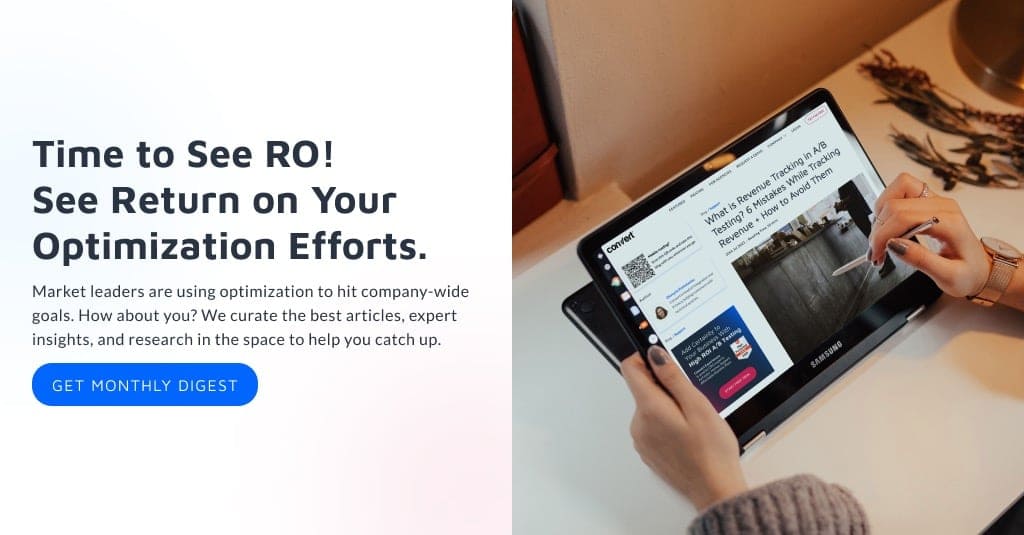
Written By
Uwemedimo Usa

Edited By
Carmen Apostu

